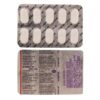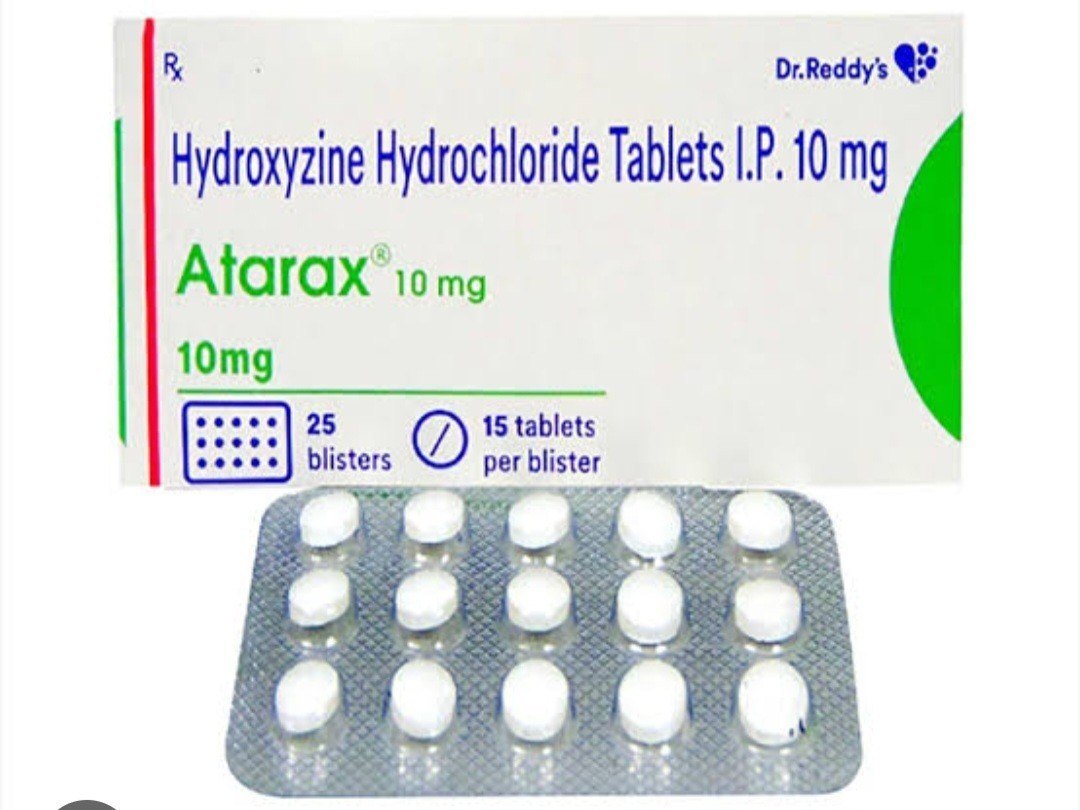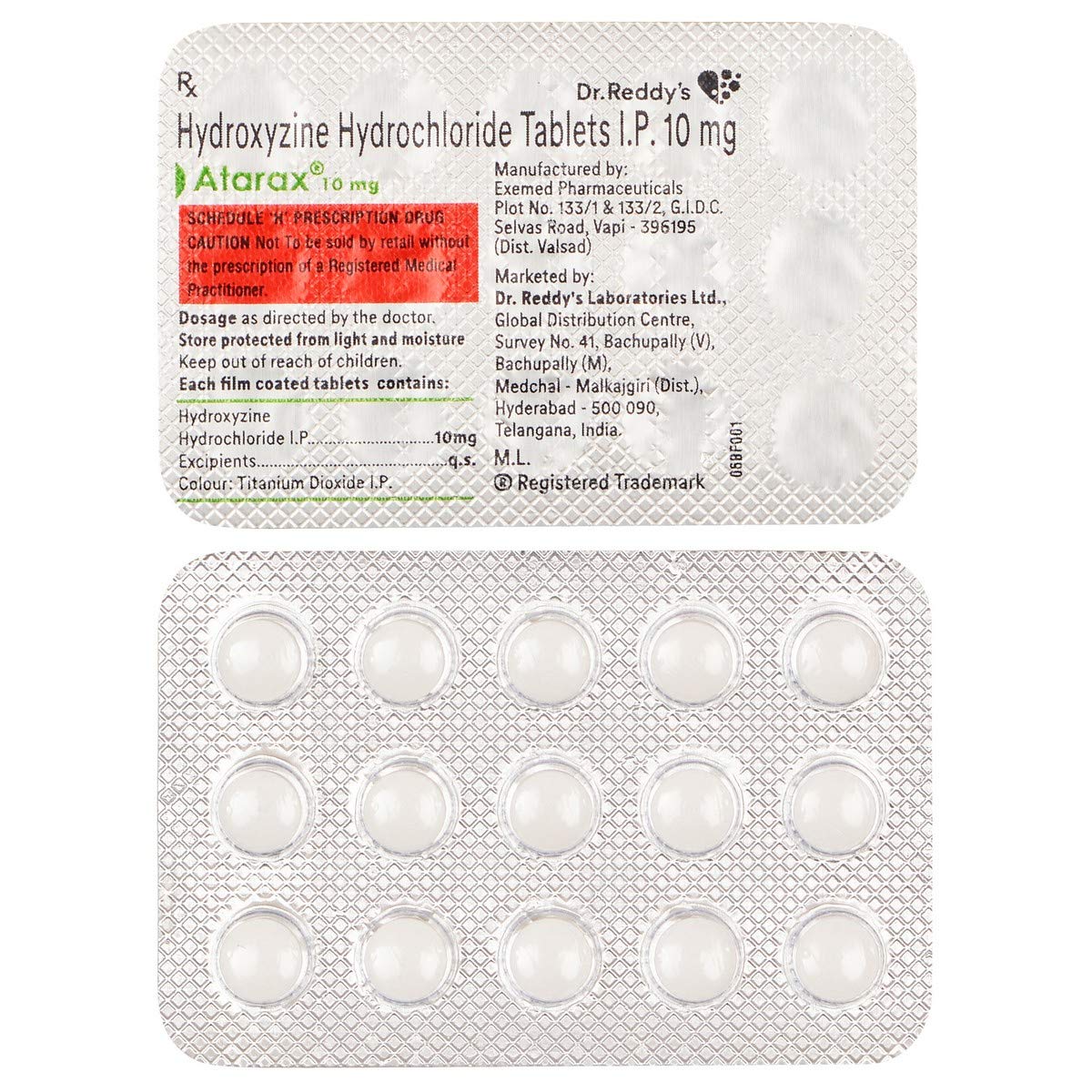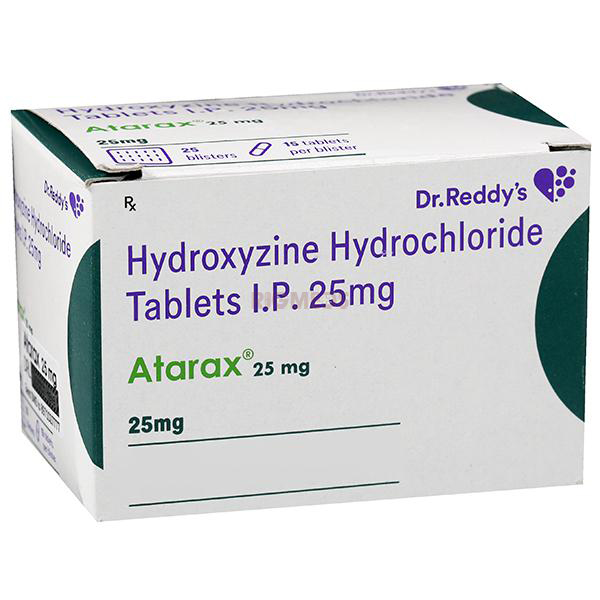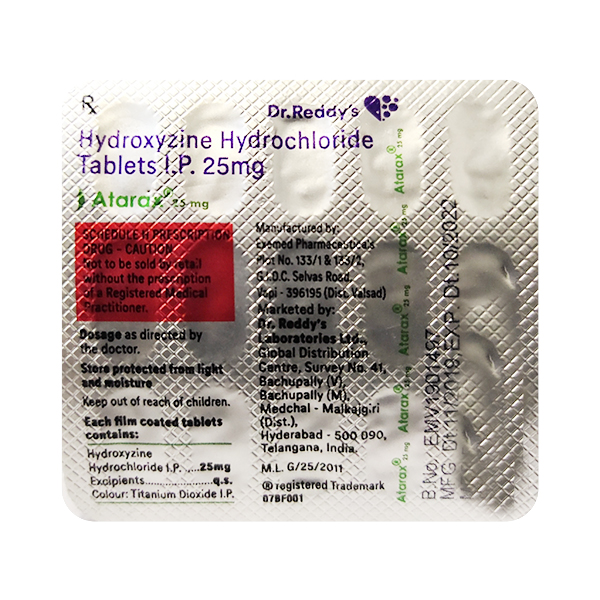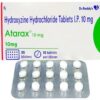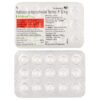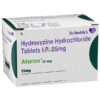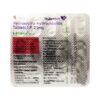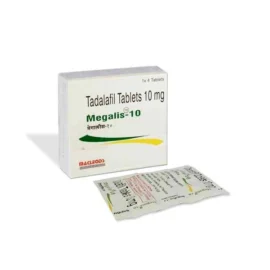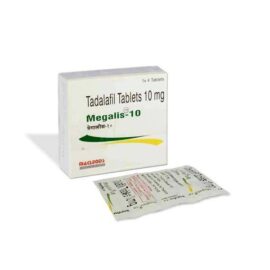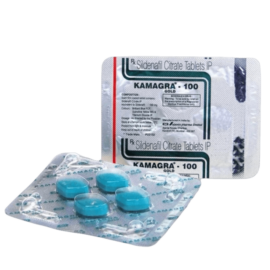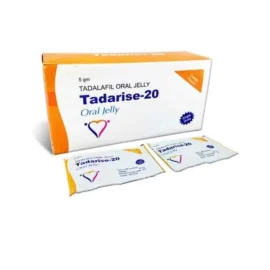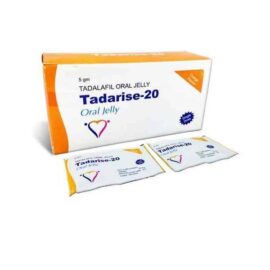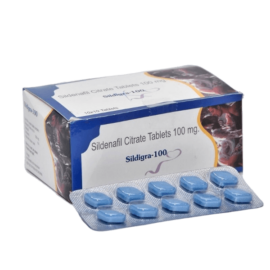Atarax
✅ Relieves anxiety
✅ Alleviates itching
✅ Treats allergic reactions
✅ Induces sedation
✅ Manages insomnia
Atarax contains Hydroxyzine.
Product Overview
Atarax is a hydroxyzine-based medication available in tablet form. This dual-action antihistamine and anxiolytic is commonly prescribed to manage symptoms of allergic reactions, anxiety disorders, and pruritus (itching). Effective in relieving allergic itching, reducing anxiety-induced tension, and providing sedative effects, Atarax offers a reliable solution for those seeking relief from allergic symptoms and anxiety-related discomfort, backed by its established efficacy and safety profile.
Uses
Atarax effectively treats allergic reaction symptoms such as itching, hives, and skin rashes. It also helps manage anxiety-related tension and promotes relaxation in anxiety disorders. Frequently used as a preoperative sedative, Atarax reduces pre-surgical anxiety. Through its action on histamine receptors and anxiolytic properties, it provides symptom relief and enhances quality of life.
How to Use
Take Atarax tablets whole with water as prescribed, with or without food. Follow your healthcare provider’s dosage instructions precisely. Do not crush or chew tablets to maintain their release mechanism. If swallowing tablets is difficult, consult your doctor for alternative options.
How it Works
Atarax’s active ingredient, hydroxyzine, blocks histamine – a chemical released during allergic reactions – alleviating itching, hives, and rashes. It also modulates brain neurotransmitter activity to produce anxiolytic effects, reducing anxiety and promoting relaxation. This dual action makes Atarax effective for both allergic symptoms and anxiety-related tension.
Dosage and Administration
Dosage varies based on condition, individual response, age, and medical history. Treatment typically begins with low doses, gradually adjusted for optimal effect with minimal side effects. Follow your doctor’s instructions precisely and don’t exceed recommended doses. Consult your physician before discontinuing use to avoid withdrawal symptoms.
Benefits
- Relieves allergic symptoms including itching, hives, and rashes
- Reduces anxiety-related tension and induces relaxation
- Effective as a preoperative sedative
- Provides symptom relief without excessive drowsiness
- Offers rapid action for quick symptom relief
Common Side Effects
Most users tolerate Atarax well, though some may experience temporary mild effects like drowsiness, dizziness, dry mouth, blurred vision, or constipation. These typically subside with continued use or dose adjustments. Rarely, more serious effects like allergic reactions or heart rhythm changes may occur. Contact your doctor if you experience severe or unusual symptoms.
Common Concerns
Users often express concerns about potential sedation and cognitive impairment, especially at higher doses. Exercise caution when driving or operating machinery until you understand how Atarax affects you. Be aware of possible interactions with alcohol and CNS depressants, which may increase sedation. Inform your doctor about all medications you’re taking to prevent adverse interactions.
Warnings
Atarax may not be suitable for individuals with glaucoma, urinary retention, or respiratory disorders, as it may worsen these conditions. Elderly patients may experience increased sensitivity to sedative effects. Avoid alcohol while taking Atarax as it enhances sedation. Consult your doctor before use if pregnant, planning pregnancy, or breastfeeding.
Storage Information
Store Atarax at room temperature, protected from moisture and heat. Keep out of reach of children and pets. Do not use after the expiration date. Dispose of unused medication according to local regulations.
Disclaimer:
Our goal is to provide expert-reviewed, accurate health information. However, this content should not replace professional medical advice. The information provided is for educational purposes only and may not include all possible side effects, interactions, or warnings. Always consult your physician about any health concerns or medications. This information is meant to support, not replace, the doctor-patient relationship.
| Strength | 10 mg, 25 mg |
|---|---|
| Quantity | 30 Tablet/s, 60 Tablet/s, 90 Tablet/s, 180 Tablet/s |










